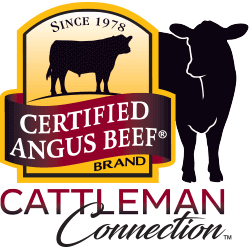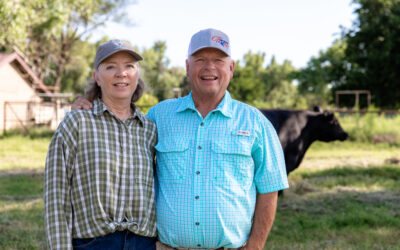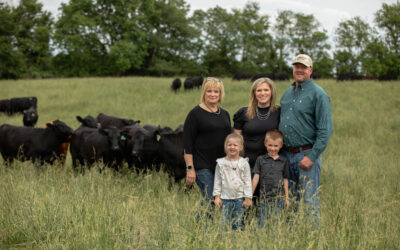
Building fences, cowherd, beef demand
Last year after a late, wet spring in northeastern Iowa, Lyle decided it was time to switch up his typical corn-soybean rotation and seeded down some “nice creek bottoms” to forage beans. (They were billed as “poor man’s silage” in the seed catalog and that intrigued him.)

“The co-op was abuzz with what was growing in those fields. Then when I chopped them off in August, there was a lot of, ‘You chopped your beans?!’,” Lyle says. He reseeded with rye and had 15 inches or more of growth for fall grazing.
Lyle, who farms near Decorah, Iowa, has been feeding the forage beans this winter and says nutrient-wise it’s the perfect complement to his corn silage.
“In my quest to change that from a corn crop on those bottoms to something I could use for my cows, it just seemed like this was the year to try it,” he says.

Sure, there are other farmers in his area with cowherds, but I’d have to bet that the last few years Lyle is the only one who has been thinking he needs less corn to sell at the elevator and more cow feed.
Providing the proof, Lyle says, “I’m the only guy putting fences in, while everybody else is taking them out.”
Neighbors ask how he can waste that good crop ground.
“I guess I shrug my shoulders and say, ‘I like my cows,’” Lyle says.
But don’t confuse that passion with a hobby. Ever since picking up his first purebred females at a local salebarn, Lyle has used data to make improvements that make his investment of time and money worth it.
Docility and mothering ability top his criteria, but he’s also interested in end product traits and recently added GeneMax as another selection tool.
Last year, 87 of Lyle’s cattle fed just down the road from his pastures hit 58% Prime.
Considering the cattle versus corn economics this year, will the co-op chatter change? It’s hard to tell, but regardless, Lyle plans to keep his focus on the herd.
“It takes a lot of time and studying, but I want the type of cattle the industry is going to demand down the road,” he says.
To read Lyle’s entire story, including how his grandpa helped him buy his first cows, how he picks his bulls and why he enjoys the business, be sure to check out, “Why? Why? Why? Why Not?,” the February cover story of the Angus Beef Bulletin.
May your bottom line be filled with black ink,
Miranda
You may also like
Legacy in the Golden Land
On a quiet stretch of Northern California rangeland, a different story unfolds. The Borror family’s legacy modestly speaks through the cattle they raise, the ground they steward. The generations who’ve made a life here demonstrate commitment to doing things right, even when no one is watching.
Helping Hands, Helping Herds
“When I die, I want to come back as one of your cows,” murmurs a friend to Steve Zybach. Full to the brim from an alfalfa ration every day, bountiful fields of lovegrass stretched out across the Texas Panhandle—and owners who leave no ounce of cattle care up for question. The Zybachs’ motivation for this level of dedication to their Angus cattle is simply love.
An Ambassador for All
Joanie, with daughter Lindsey and her husband, Adam Hall, raise registered Angus cattle with two primary goals: producing high-quality seedstock that perform well in a wide variety of environments and ensuring end-user satisfaction. Those goals tie everything together, from promoting Angus to other producers to sharing their story with CAB partners and beef consumers.



